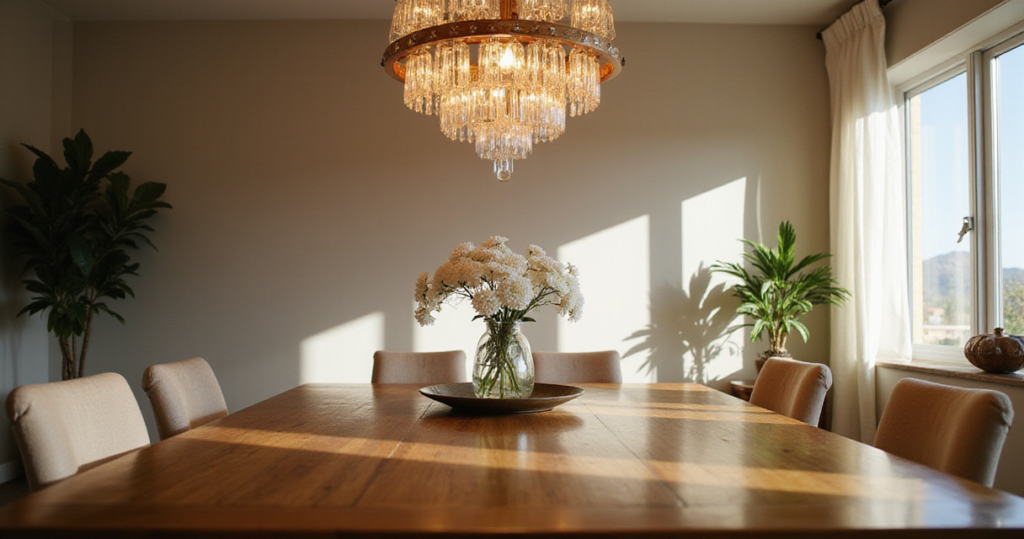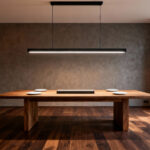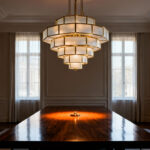Of all the decisions we make to shape our homes, I find that choosing the right dining room chandelier is one of the most personal. This isn’t just a light fixture. It’s the anchor of the room where your family’s stories unfold—from chaotic Tuesday night dinners with the kids to quiet holiday toasts with aging parents. The light you choose to hang over that table does more than just help you see your food; it sets the stage, defines the room’s entire personality, and sends a message of welcome.
But I get it. Walking into a lighting showroom or scrolling through endless online options can be completely dizzying. Crystal or metal? Big or small? How high is too high? These are the questions that can stall a project for months. What really matters is creating a space that works beautifully for everyone—the toddler in the high chair, the grandparent in their wheelchair, and you.
As a universal design specialist, I’ve spent over a decade helping people create homes that adapt to life’s changes. So let’s cut through the noise. Here are my time-tested tips for choosing a chandelier that isn’t just stylish, but is also a functional, forward-thinking part of your home.
1. Find the Perfect Chandelier Size for Your Table (Not Just the Room)
Forget the complicated room-sizing formulas for a minute. The most important relationship your chandelier has is with your dining table. A common mistake I see is a fixture that’s too big for the table, creating a top-heavy, overwhelming feel and a legitimate head-bumping hazard when you lean over.
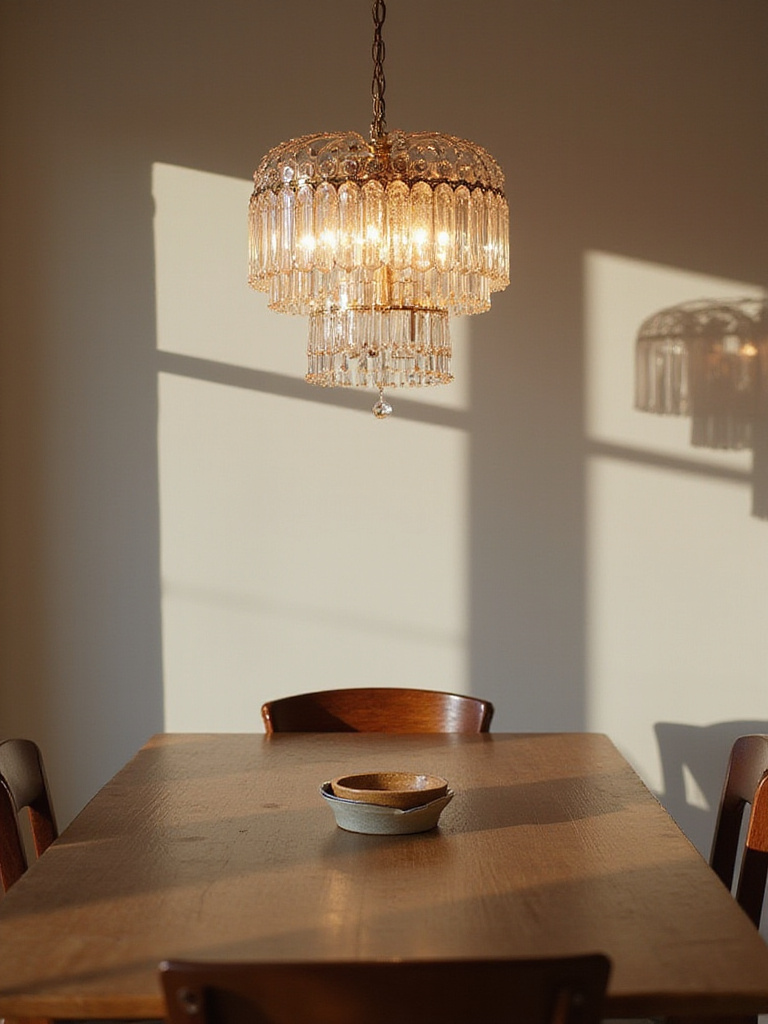
The most reliable rule of thumb I use is to measure the width of your dining table and subtract about 12 inches. That number is the maximum diameter you should aim for. So, if you have a 48-inch wide table, you’re looking for a chandelier that’s no wider than 36 inches. This keeps the light beautifully centered and contained over the dining surface, creating a “zone of connection.”
- For rectangular tables: Use the table’s width to find your max diameter. For very long tables, a linear fixture is often a better fit.
- For round tables: Your chandelier diameter should be about 1/2 to 2/3 of your table’s diameter. A 60-inch round table pairs beautifully with a 30- to 40-inch round chandelier.
My favorite trick? Before you buy anything, cut out a cardboard circle or shape that matches the dimensions of your top contender. Have someone hold it up in the space. It’s a low-tech way to prevent a high-cost mistake and instantly tells you if the scale feels right.
2. Master the Art of Hanging Height for Everyone
The height of your chandelier is where aesthetics and function really have to shake hands. The standard design advice says to hang the bottom of the fixture 30-36 inches above the tabletop in a room with 8-foot ceilings. And you can add about 3 inches for every extra foot of ceiling height. It’s a solid starting point.
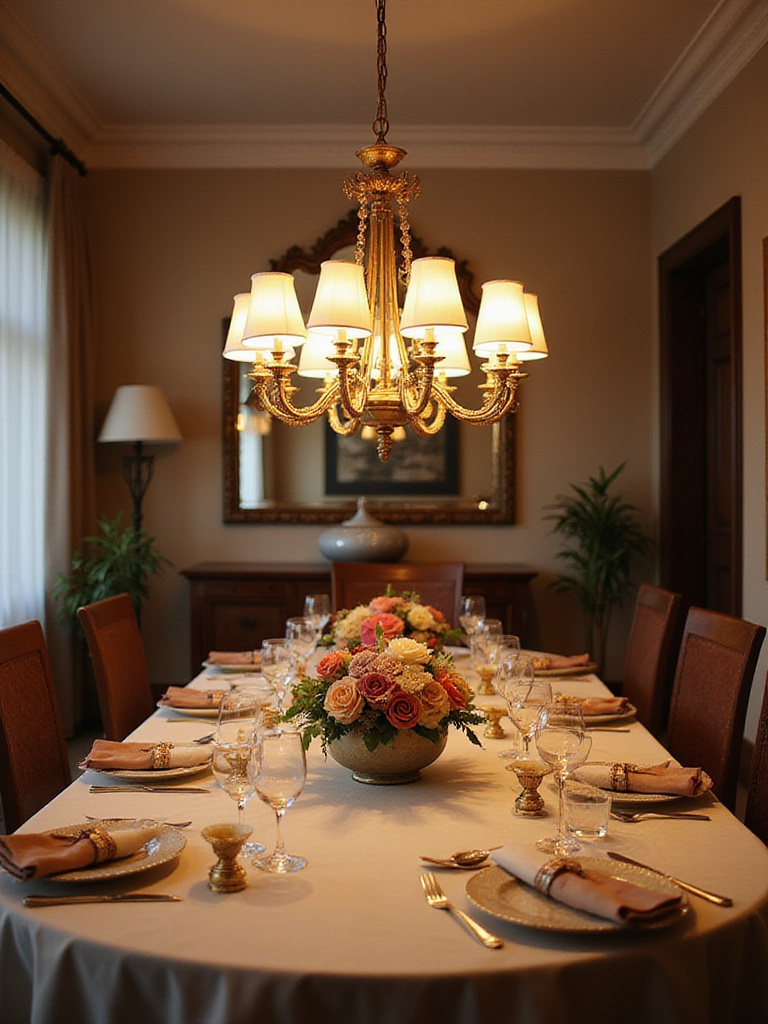
But good design goes deeper. That 30-36 inch range is so important because it ensures the light source is below eye level for most seated adults, so no one gets a blast of glare. It also preserves sightlines across the table. I once worked with a family where the grandfather used a wheelchair, and their old chandelier was hung just low enough to block his view of his grandchildren on the other side. Lowering it just a few inches made him feel part of the conversation again. It’s these small details that turn a house into a home.
- 8-foot ceilings: 30–36 inches above the table.
- 9-foot ceilings: 33–39 inches above the table.
- 10-foot ceilings: 36–42 inches above the table.
Always check from a seated position before making the final call. Does it feel intimate without being intrusive? Can you see everyone at the table clearly? That’s your sweet spot.
3. Let Your Chandelier and Your Room’s Style Talk to Each Other
Choosing a chandelier that feels like it belongs requires listening to what your room is already saying. What’s the dominant feeling? Is it cozy and rustic, sleek and minimal, or gracefully traditional? The fixture you choose should join that conversation, not shout over it.
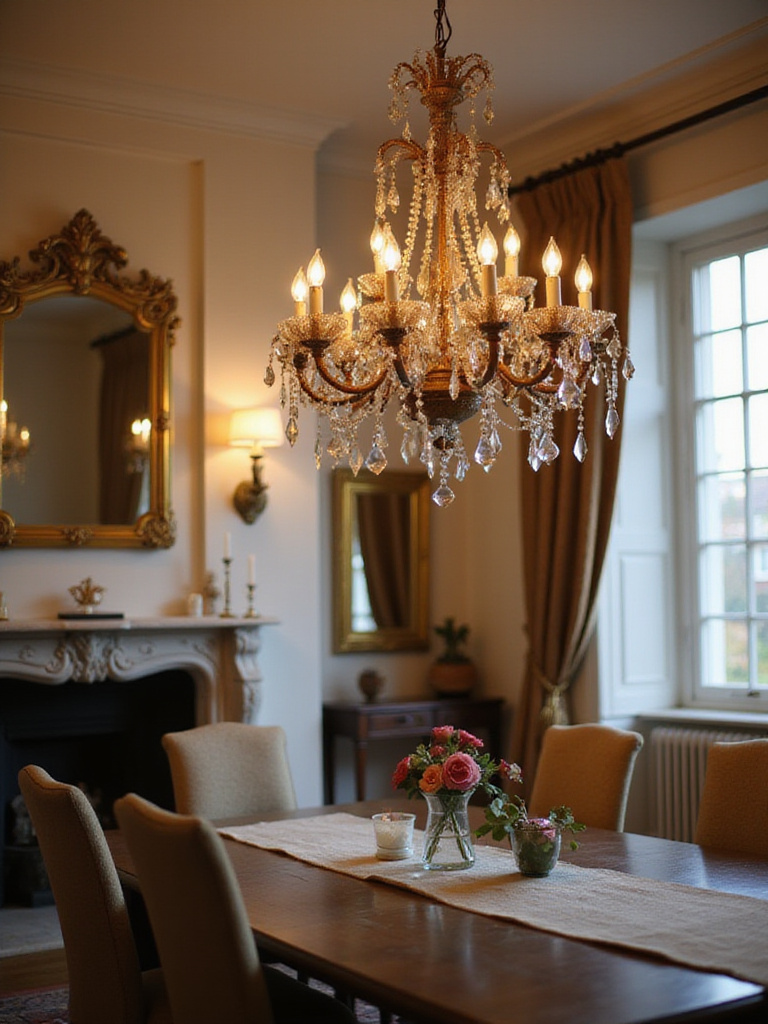
This doesn’t mean you have to be rigidly matchy-matchy. Frankly, some of the most beautiful rooms I’ve seen play with contrast. A slightly ornate chandelier in an otherwise minimalist room can be breathtaking. But the key is that the choice feels intentional. Look at the other finishes in the room—the metal on your cabinet hardware, the wood tones of your chairs, the texture of your rug. Your chandelier should feel like a cousin to these elements, not a stranger.
- Traditional spaces: Often feel wonderful with classic forms in bronze, brass, or crystal.
- Modern rooms: Are a great home for bold geometric shapes, clean lines, and matte black or chrome finishes.
- Transitional areas: This is where you can have fun with mixed materials and updated classic shapes in finishes like brushed gold or nickel.
It’s about harmony, not mimicry. Your goal is a fixture that feels like the room’s finishing touch, the piece that ties everything together.
4. Create Depth by Layering Your Light
Here’s an insider concept that will completely change how you light a room: thinking in layers. Relying on a single chandelier to do all the work is like asking one person to sing every part of a choir. Great lighting has three layers:
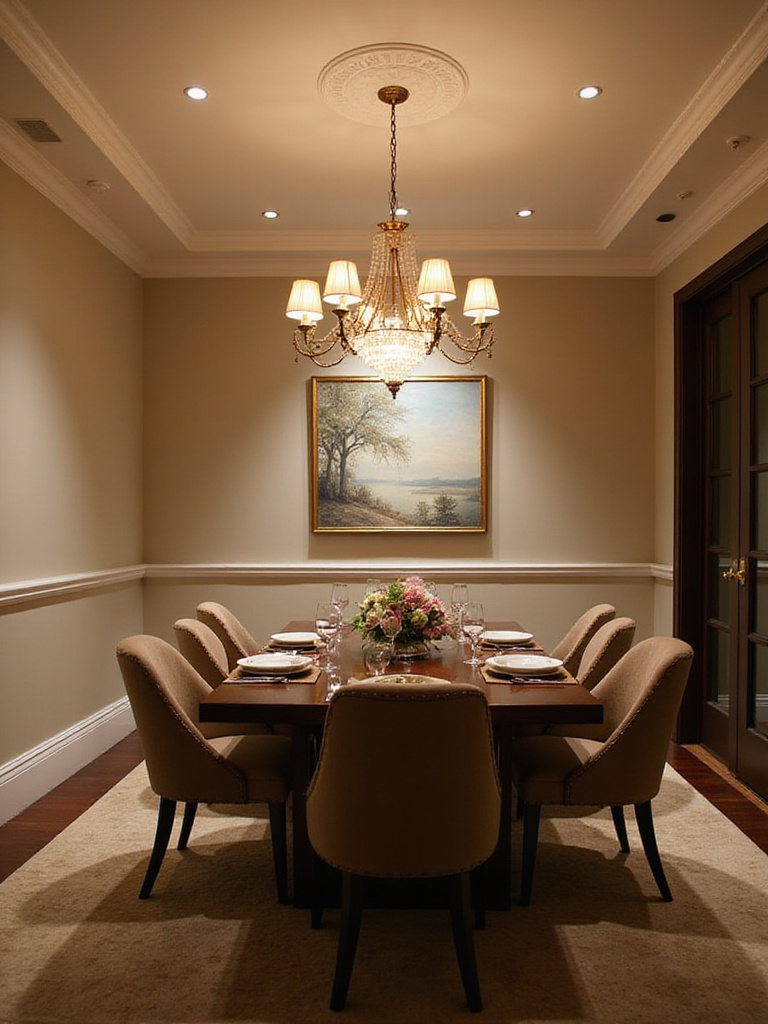
- Ambient Light: This is your general, room-filling light. Your chandelier is often a primary source of this.
- Task Light: This is focused light for a specific purpose—in this case, illuminating the meal on your table. Your chandelier does this, too.
- Accent Light: This is the “magic” layer. It highlights things you love, like a piece of art, a beautiful plant, or an architectural feature. Wall sconces or a picture light are great examples.
When these layers work together, your room gains depth, warmth, and incredible flexibility. You can have the chandelier and recessed lights on bright for a family game night, then dim them down and let the wall sconces cast a soft glow for a quiet dinner. This layered approach is a hallmark of truly thoughtful, high-end design.
5. Choose Bulbs That Make Food (and People) Look Their Best
The bulbs inside your chandelier are just as important as the fixture itself. This is where you can seriously upgrade the feeling of your dining room. For a dining space, you want light that’s warm and inviting, not harsh and clinical.

Look for LED bulbs with a color temperature between 2700K and 3000K (it will say on the box). This range gives off a soft, welcoming glow reminiscent of candlelight or an incandescent bulb. Anything higher (like 4000K+) can feel sterile and make your space feel more like a cafeteria. The other secret weapon is a high CRI (Color Rendering Index) of 90 or more. This means colors will look true and vibrant. A high CRI makes your food look more appetizing and is much more flattering to skin tones.
- Color Temperature: 2700K–3000K for a warm, cozy glow.
- CRI Rating: 90+ to make colors pop.
- Dimming: Always, always, always choose dimmable bulbs. This is non-negotiable for mood control and sensory-friendly design.
It’s amazing how the right bulb can transform a meal. It’s the difference between a rushed, sterile experience and one that encourages people to linger and connect.
6. Pick Materials That Match Your Style and Your Life
The material of your chandelier defines so much of its character. A crystal fixture throws brilliant, dancing patterns of light around the room, creating a sense of celebration. A metal one in matte black feels graphic and modern. Wood can bring in an organic warmth that’s grounding and calm.

But this is also where practicality has to enter the picture. As a designer who focuses on homes that work, I have to ask: Who is going to clean this? A stunning crystal chandelier that requires painstaking, regular cleaning might not be the right fit for a busy family or someone with limited mobility or energy. In contrast, a simple metal or glass fixture can be wiped down in minutes.
- Crystal: High sparkle, high glamour, high maintenance.
- Metal: Durable, easy to clean, and available in endless finishes.
- Wood/Natural Fibers: Adds texture and warmth, great for a more casual or bohemian feel.
Be honest about your lifestyle. The most beautiful chandelier is one you can actually maintain, so it continues to bring you joy instead of becoming another chore on your to-do list.
7. Select Finishes That Will Stand the Test of Time
The finish of your chandelier ties it into the room’s color story. Generally, warm finishes like brass, bronze, and copper pair beautifully with creamier, earthy palettes, while cool finishes like chrome, nickel, and black are a natural fit for grays, crisp whites, and more contemporary spaces.
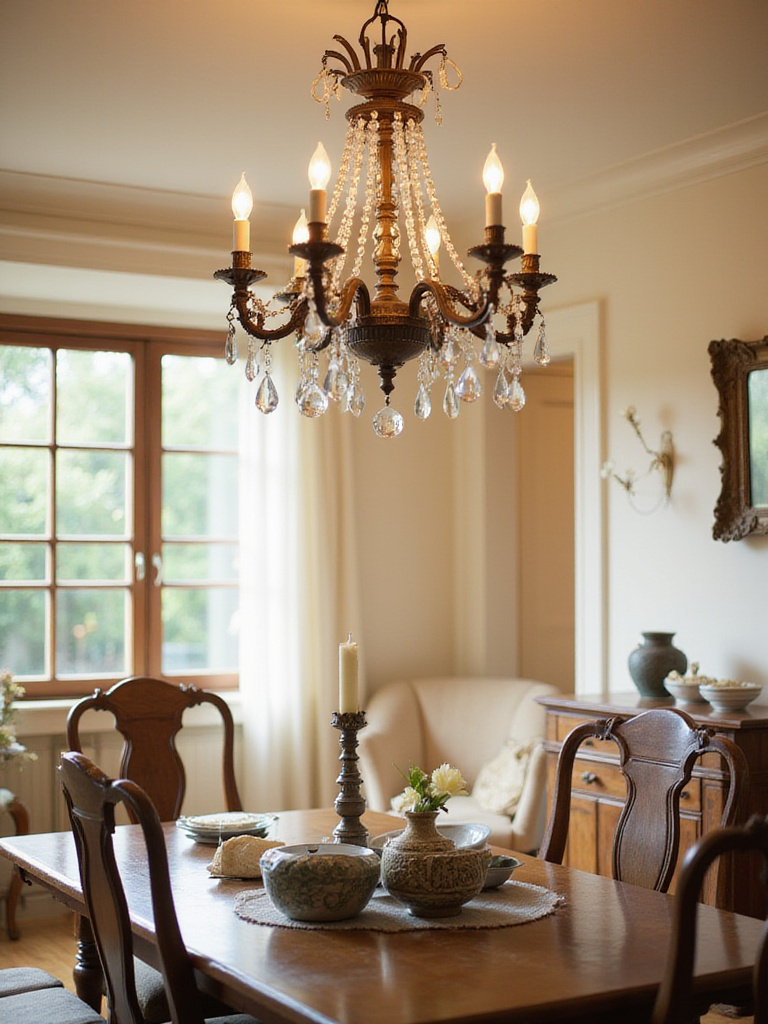
I usually advise my clients to lean towards timelessness here. A chandelier is a significant investment, not a trendy throw pillow. While rose gold or other hyper-trendy finishes might look amazing today, will you still love it in five or ten years? Classic finishes like brushed nickel, aged brass, or oil-rubbed bronze have a staying power that allows your home to evolve around them.
- Warm Finishes: Brass, bronze, copper.
- Cool Finishes: Chrome, polished nickel, matte black.
- Transitional Finishes: Brushed or satin nickel and brass have a softer look that bridges modern and traditional styles.
Of course, if you’re head-over-heels for a trendy finish, go for it! Your home should reflect you. But if you’re aiming for longevity and ease, the classics are classic for a reason.
8. Consider Visual Weight, Not Just Size
This is a subtle concept, but it makes a world of difference. Two chandeliers can have the exact same diameter, but one can feel much larger and heavier than the other. This is called “visual weight.”

An open, airy fixture—like a wireframe orb or a design with delicate, spaced-out arms—has low visual weight. You can often get away with a larger diameter with these designs because they don’t block sightlines or feel heavy. A solid, dense fixture—like a drum shade or a tightly packed crystal piece—has high visual weight. These designs can feel heavy and are often best in slightly smaller sizes, especially in rooms with lower ceilings.
- Room Sizing Formula: As a starting point, add the room’s length and width in feet to get the diameter in inches (e.g., a 12’x14’ room = a 26″ chandelier).
- But Adjust for Visual Weight: If your pick is airy, you can go a bit larger. If it’s dense, you might want to size down.
Trust your gut on this. Does it feel balanced? Or does it feel like an elephant in the room (or a fly on the wall)? The cardboard mock-up trick helps a lot here, too.
9. Look at Trends Through a Timeless Lens
It’s fun to see what’s new in design, but I always encourage people to look at why a trend is popular. The trends that stick around are usually rooted in good function.
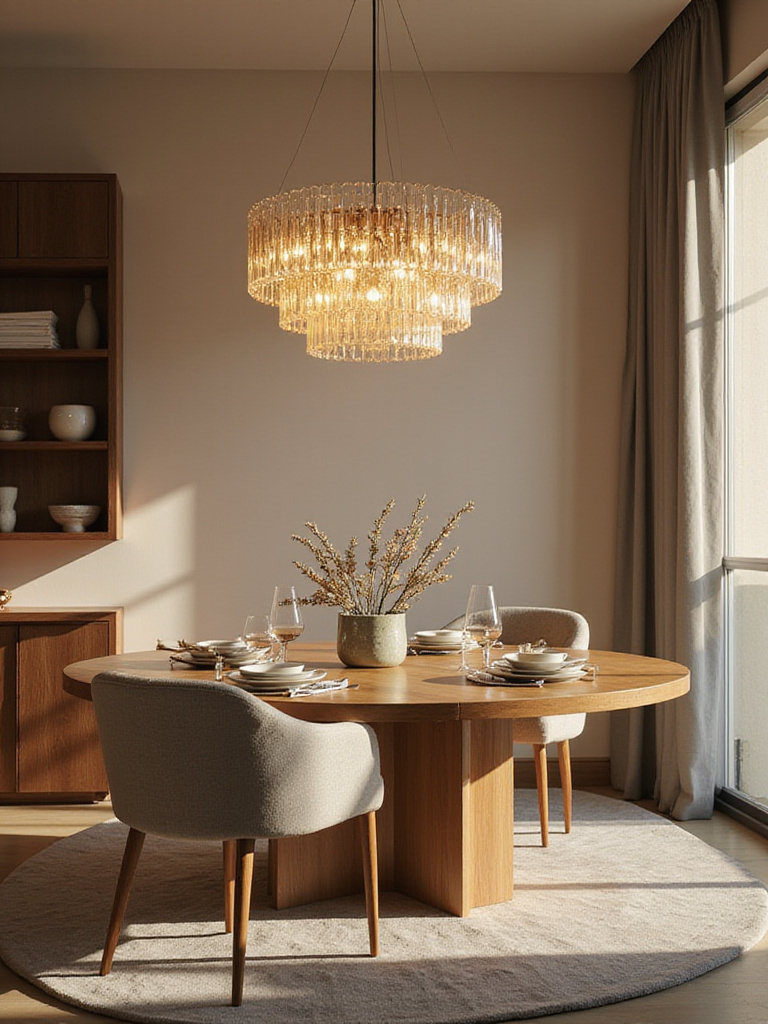
For example, linear chandeliers are very popular right now. Why? Because so many of us have long, rectangular dining tables, and a linear fixture lights the entire length more evenly than a single round one. It’s a stylish trend that’s also just smart design. Similarly, integrated LED fixtures are becoming more common. This isn’t just a tech trend; it allows for incredibly sleek, sculptural forms that wouldn’t be possible with traditional bulbs.
- Popular Styles Right Now: Linear pendants, sculptural and artistic forms, and fixtures mixing metal with natural materials like wood or stone.
- Trending Finishes: Matte black remains strong, and warm, aged brass is having a major comeback.
- Technology to Watch: Smart controls and integrated LEDs are becoming the new standard for quality fixtures.
My advice is to borrow from trends, but don’t be a slave to them. A classic form in an updated finish is a great way to feel current without being dated in a few years.
10. Embrace Smart Tech as an Accessibility Tool
Smart technology isn’t just a cool gimmick; for many people, it’s a powerful tool for independence and comfort. Integrating your chandelier with smart controls can be life-changing.
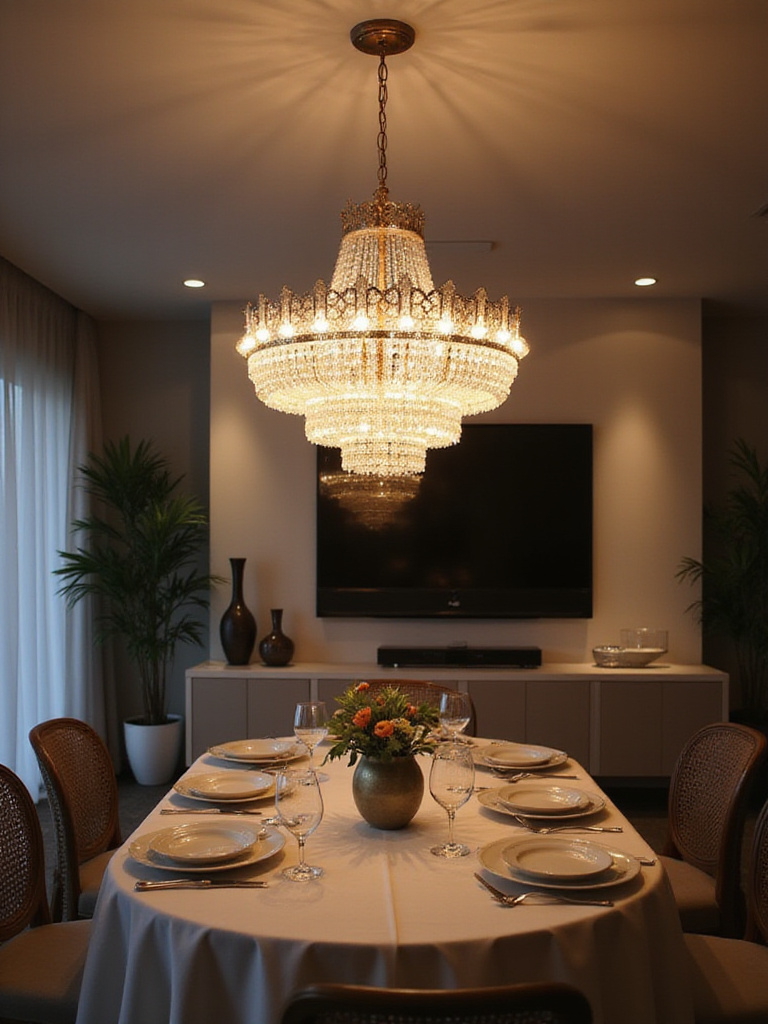
Think about it: being able to dim the lights for dinner without ever leaving the table is a huge convenience for someone with mobility challenges. Voice control through systems like Alexa or Google Home means a person with limited dexterity can easily adjust the lighting. You can even program “scenes”—a “Homework” scene that’s bright and clear, and a “Relax” scene that’s warm and dim. For a family member with dementia, you can program the lights to warm and dim in the evening, providing a gentle, non-verbal cue that it’s time to wind down.
- What You Need: Smart bulbs or, even better, a smart dimmer switch (like those from Lutron Caséta).
- What You Get: Remote control via an app, voice control, scheduling, and custom scene-setting.
This is a perfect example of universal design: a feature that’s a cool convenience for some is a gateway to independence for others.
11. Never, Ever Compromise on Electrical Safety
This is the part where I get a little stern. Your chandelier is a heavy object hanging over your family’s heads, and it’s wired into your home’s electrical system. Safety here is paramount.
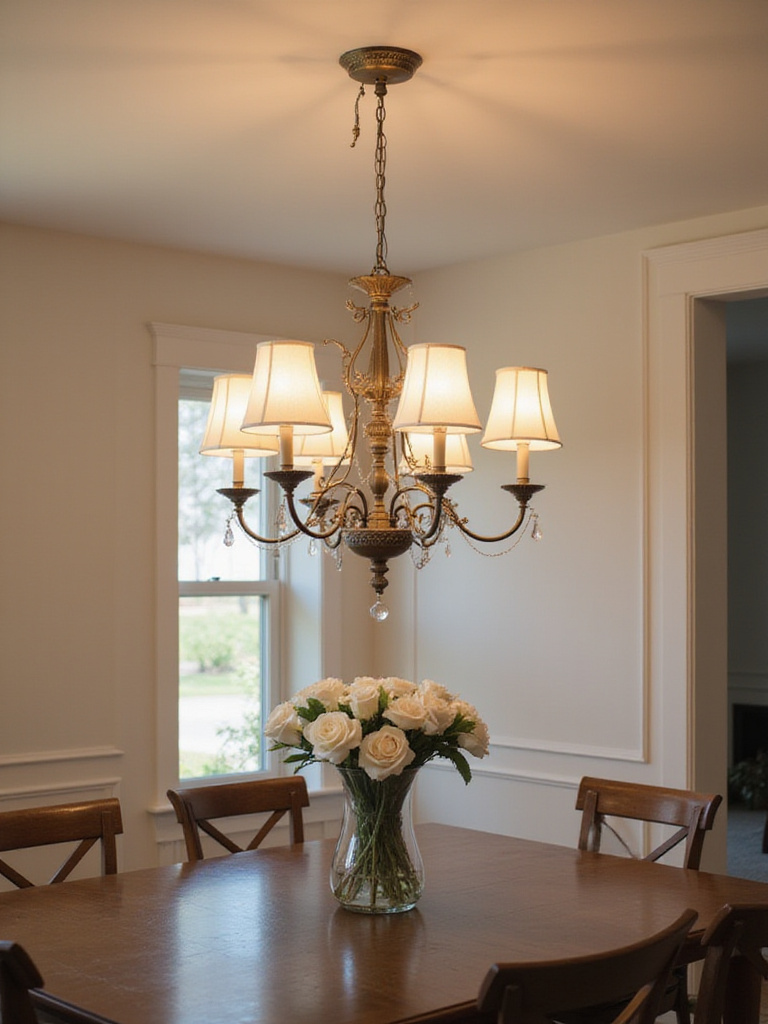
A standard junction box in your ceiling is only rated to hold up to 50 pounds. If your beautiful new fixture weighs more than that, you absolutely must have the box replaced with a fan-rated one that is braced to a ceiling joist. This is not a corner you can cut. A licensed electrician will know how to do this safely and correctly.
- Weight Limits: Know your fixture’s weight. If it’s over 50 lbs, call a pro. No exceptions.
- Circuit Capacity: Ensure the total wattage of your bulbs doesn’t overload the circuit.
- Professional Help: For heavy fixtures, high ceilings, or if you’re even a little unsure, please hire a licensed electrician. Their fee is a small price to pay for your family’s safety and your peace of mind.
I’ve heard too many horror stories. Do it right the first time.
12. Make Dimmer Switches Your Best Friend
If you only take one piece of advice from this entire article, let it be this: install a dimmer switch. It’s the single most impactful, low-cost upgrade you can make to your dining room. A dimmer is not a luxury; it is an essential tool.
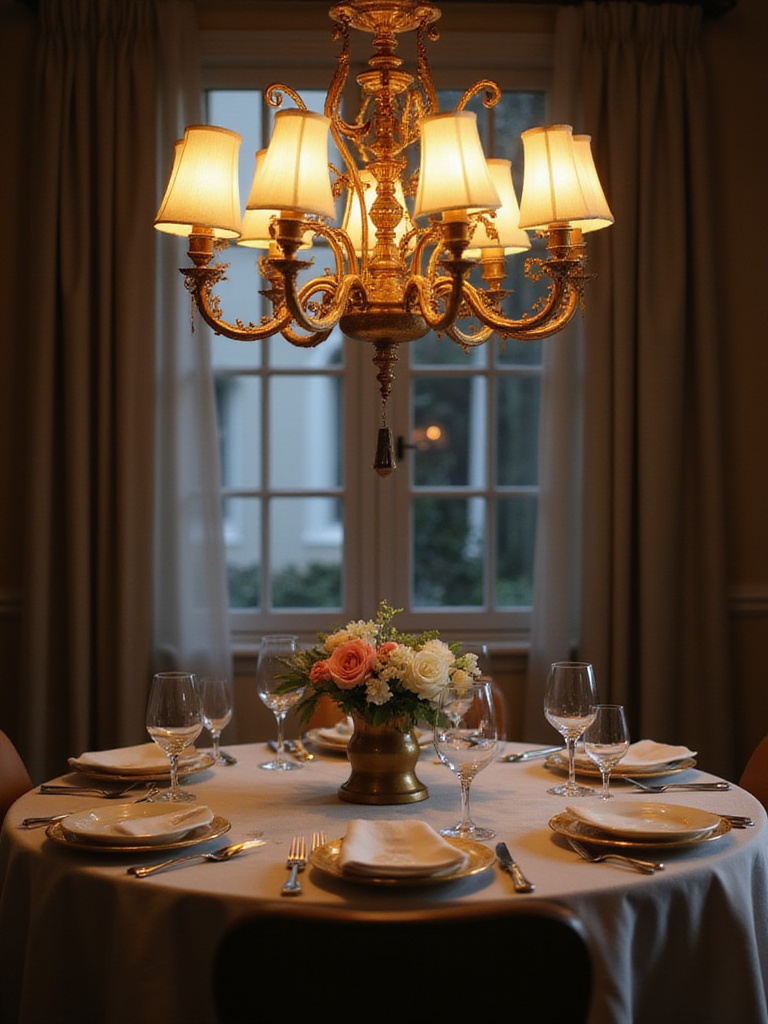
A dimmer gives you the power to transform the mood of your room in an instant. Bright, energetic light for family craft projects. A medium, focused light for homework. And a soft, warm glow for an intimate dinner or a quiet moment. For children or adults with sensory sensitivities, the ability to reduce the intensity of light can be the difference between a calm space and an overwhelming one. It also saves energy and extends the life of your bulbs.
- Dimmer Types: Make sure you get a dimmer that is compatible with your bulbs (especially important for LEDs to avoid flicker).
- Smart Dimmers: Offer the most flexibility with app and voice control.
- The Benefit: Total control over ambiance, comfort, and function.
Frankly, in my book, a chandelier without a dimmer is a missed opportunity.
13. Position Your Chandelier for Connection, Not Just Light
Here’s a small but critical detail: your chandelier should be centered over your dining table, not necessarily in the center of the room. Your dining room’s architecture might be a bit quirky, or your table might be offset to create a better traffic flow.
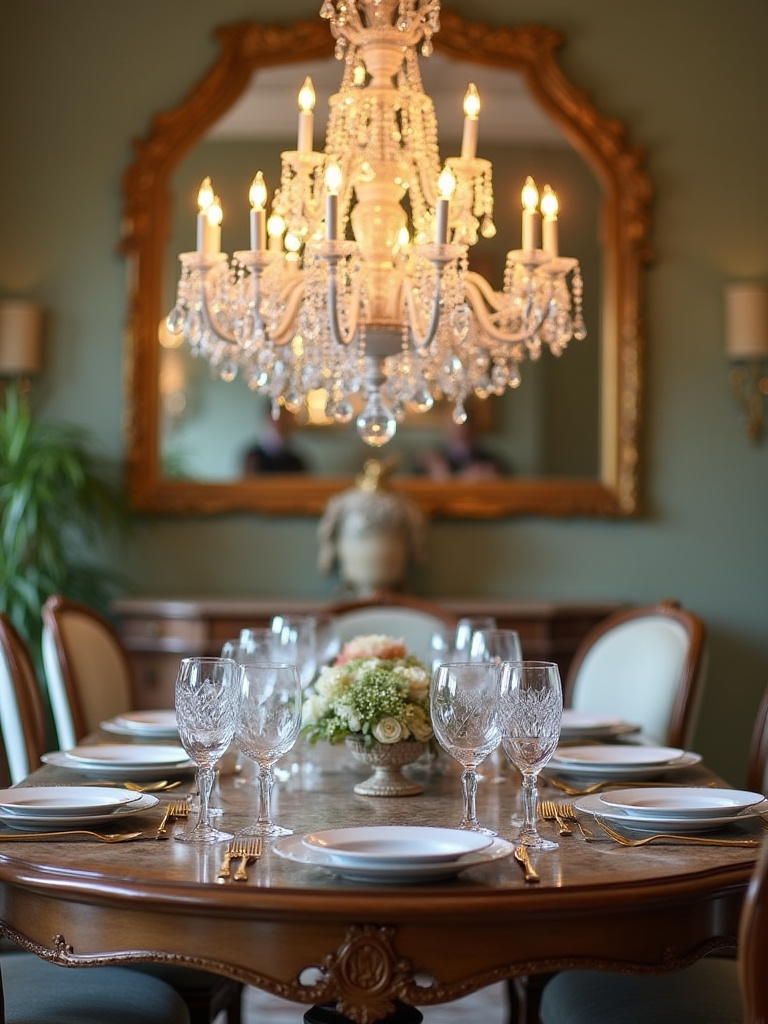
By centering the fixture on the table, you create an “invisible room” of light right where the action happens. This focused glow draws people in, encourages intimacy, and defines the dining zone as a special, designated area. It reinforces the table as the heart of the space. So get out your tape measure and find the true center of your tabletop—that’s where the magic should hang.
- Centering: Always prioritize the table’s center point.
- Clearance: Make sure there’s enough room to walk around the table without bumping into the fixture (aim for at least 48 inches from the wall to the table edge if you can).
This simple placement trick is what makes the lighting feel intentional and custom-fit to your space.
14. Know When It’s Time to Call a Professional
I’m a huge advocate for DIY, but it’s equally important to know your limits. You absolutely should call a professional electrician for your chandelier installation if:

- The fixture weighs more than 50 pounds.
- You’re working with high or sloped ceilings.
- Your home is older and may have outdated wiring.
- You’re installing a smart dimmer and aren’t comfortable with wiring.
- You need to move the electrical box to center it over your table.
A licensed electrician has the right tools, insurance, and knowledge of local building codes to protect your home. It’s an investment in getting the job done safely and correctly, and it often protects the warranty on your new fixture as well. Don’t let a project you’re excited about turn into a hazard.
15. Optimize Your Bulb Choice for Brightness and Clarity
We talked about the color of your bulbs, but the amount of light is just as critical. The measure of brightness is called “lumens.” Too few lumens, and the space will feel dim and gloomy, which can be difficult for people with aging eyes. Too many, and it can feel like you’re eating under a spotlight, creating glare and sensory overload.
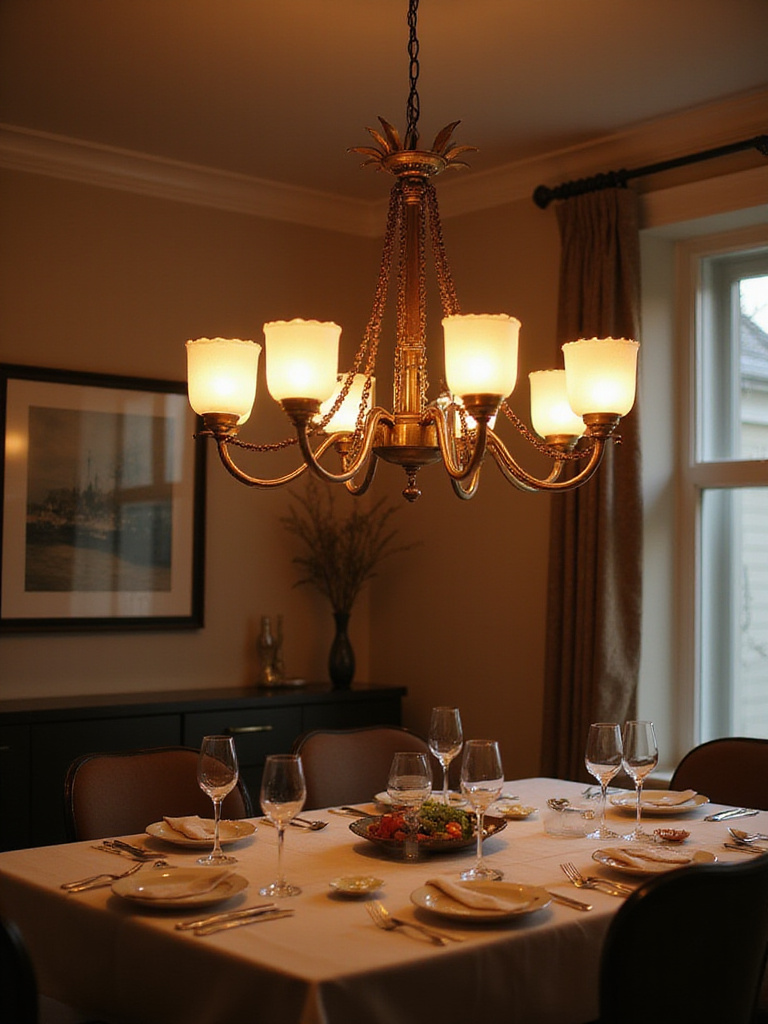
For an average dining room, aim for a total of 2,000 to 4,000 lumens from your chandelier. You can find the lumen output on the bulb’s packaging and add them up. A 60-watt equivalent LED bulb, for example, is typically around 800 lumens. So, a five-light chandelier would give you a nice, bright 4,000 lumens, which you can then dim down to the perfect level for any activity.
- Lumen Goal: 2,000–4,000 total lumens for most dining rooms.
- Bulb Shape Matters: For a chandelier where bulbs are exposed, a decorative candelabra or globe bulb looks much nicer than a standard A19 shape.
Remember, with a dimmer, you can always make a bright room darker, but you can’t make a dim room brighter. It’s better to have a little more lumen capacity than not enough.
16. Use Smart Fixtures for Smaller Dining Nooks
In a smaller dining room or an eat-in kitchen, a massive chandelier can feel like it’s sucking all the air out of the space. But you don’t have to settle for a boring light! The key is to choose a fixture that provides style and great light without adding visual bulk.
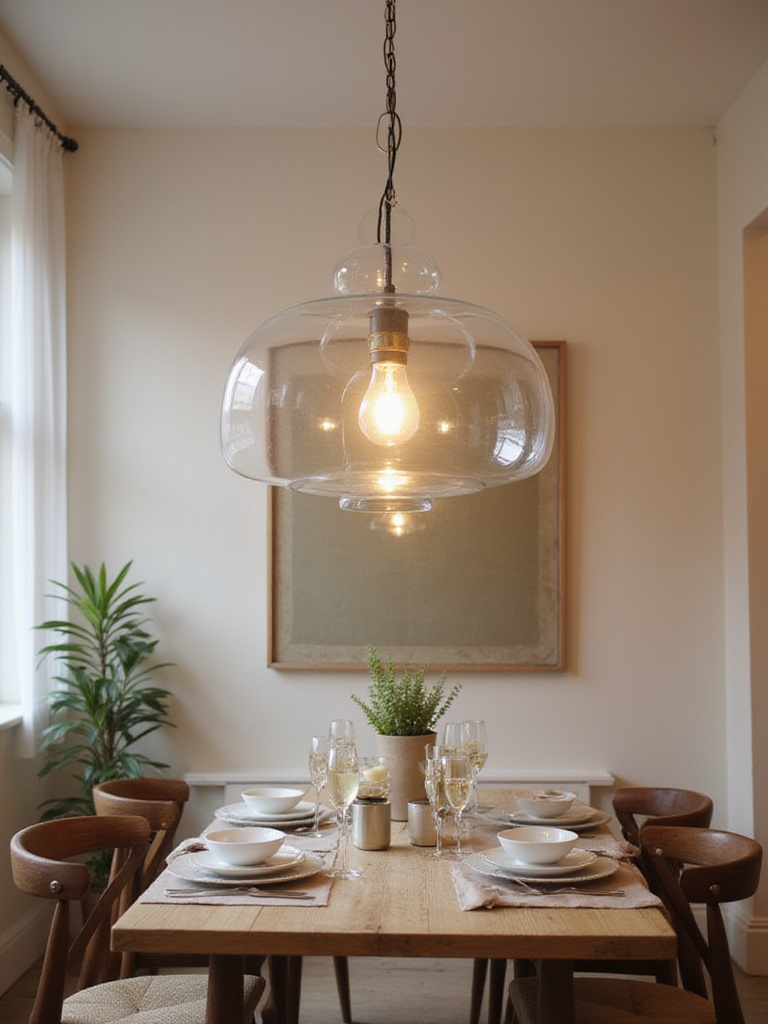
Look for semi-flush or flush-mount fixtures that have a “chandelier” feel—maybe with some crystal details or elegant arms—but hug the ceiling. Linear pendants are also fantastic in narrow spaces. And my favorite trick for small rooms is to choose a fixture with an open, airy design. A wireframe orb, for example, defines the space without visually closing it in.
- Great Options: Semi-flush mounts, compact pendants, linear fixtures.
- Space-Making Features: Open, “see-through” designs and reflective finishes (like polished nickel or glass) can make a space feel bigger and brighter.
You can still make a big statement in a small space, you just have to be smarter about your choices.
17. Solve Low Ceiling Challenges with the Right Shape
Low ceilings (typically 8 feet or less) can make choosing a chandelier feel impossible. But you have great options. This is where flush-mount and semi-flush fixtures are your absolute heroes. They provide that decorative, central focus without encroaching on precious headroom.

Another great strategy for low ceilings is to choose a fixture that directs some light upwards. When light bounces off a white ceiling, it creates an illusion of height and makes the whole room feel brighter and more open. Avoid fixtures that are heavy on the bottom or have a strong down-light effect, as this can make the ceiling feel like it’s pressing down on you.
- Best Bets: Flush-mounts and semi-flush mounts.
- Visual Trick: Choose fixtures that cast light up towards the ceiling.
- What to Avoid: Heavy, dense fixtures that hang down too far.
Even with a low ceiling, you can have a beautiful fixture that elevates the space instead of lowering it.
18. Pair Your Chandelier with Recessed Lighting
Let’s circle back to that idea of layering light. The ultimate power duo in a dining room is a beautiful chandelier paired with simple, recessed lighting. This combination gives you the best of all worlds.

Use the recessed lights (on a separate dimmer, of course) for your general, ambient light. Place them around the perimeter of the room, a few feet off the walls, to provide a clean, even wash of light. This is your “cleanup and get things ready” light. Then, your chandelier provides the focused task lighting over the table and the decorative “jewelry” for the room. This layered approach eliminates shadows, makes the room feel larger, and gives you incredible flexibility for any situation.
- The Strategy: Recessed lights for general ambient light, chandelier for task light and focus.
- The Controls: Put them on separate dimmer switches for maximum control.
This is how professional designers get that rich, sophisticated look. It’s a completely achievable setup for any home.
19. Give an Old Chandelier a New Lease on Life
Have a chandelier that’s structurally sound but feels dated? Before you replace it, consider giving it a refresh! This is a wonderfully sustainable and budget-friendly way to get a custom look.
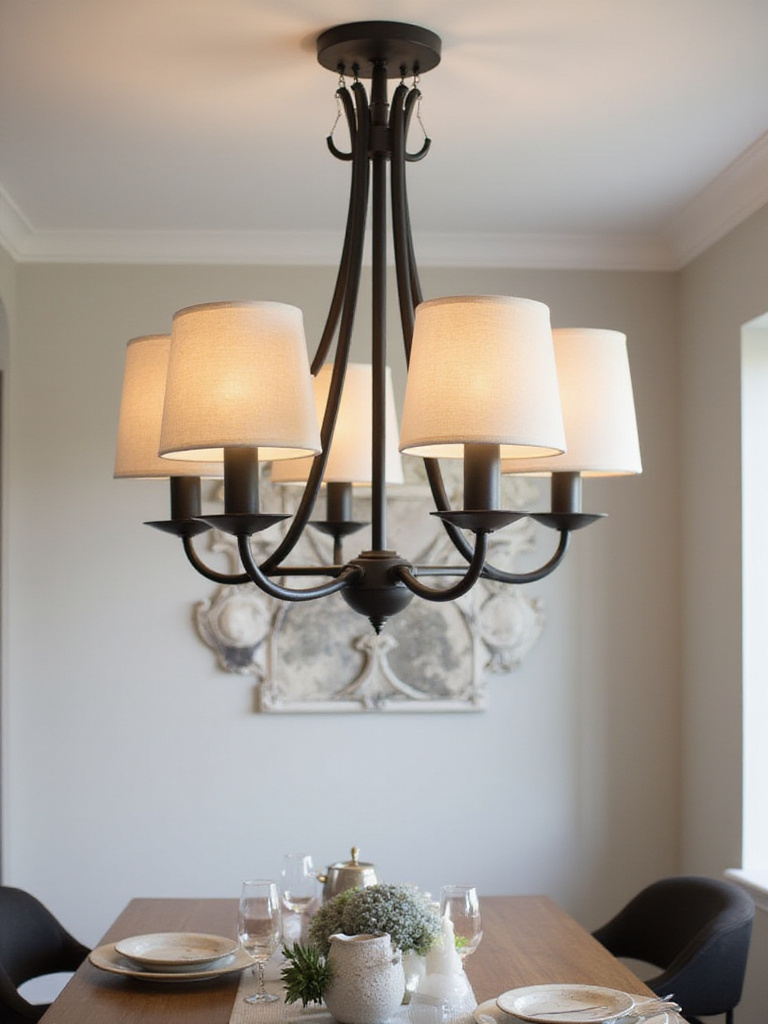
A can of high-quality spray paint designed for metal can completely transform an old brass fixture into a modern matte black one. Swapping out fussy glass shades for simple linen drum shades can update a look instantly. You can even replace old, yellowed crystals with new, clear ones for a fresh sparkle.
- Easy Updates: A new paint finish, new lampshades, or new bulbs.
- Be Careful: If the wiring is old or brittle, it’s best to have an electrician take a look and potentially rewire it for safety.
I love seeing people honor the history of their home by thoughtfully updating an original piece. It adds a layer of story that you just can’t buy new.
20. Keep Your Chandelier Sparkling (and Shining Bright)
A dusty, grimy chandelier doesn’t just look sad; it significantly reduces the amount of light it puts out. Regular cleaning is a matter of both beauty and function.
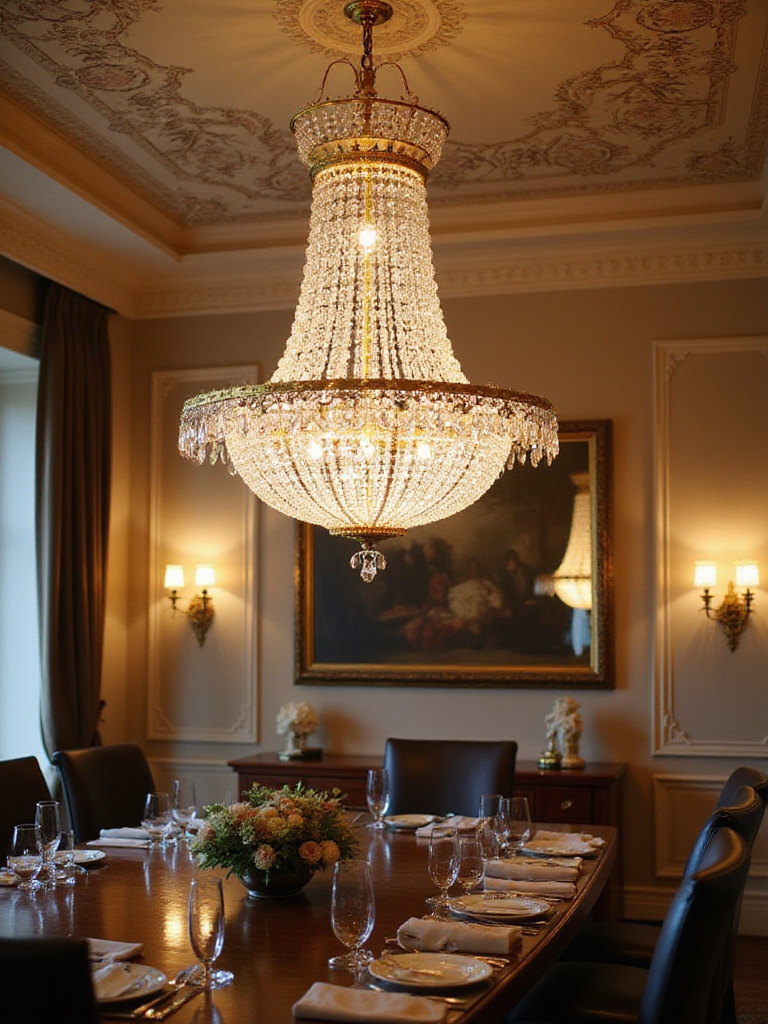
For a quick dusting (once a month or so), a long-handled lambswool or microfiber duster works wonders. For a deeper clean (once or twice a year), turn off the power at the breaker first. For metal and glass, a simple solution of a few drops of mild dish soap in warm water works well on a soft cloth. For intricate crystal, you can find specialty chandelier cleaning sprays that you spray on and let drip-dry onto a towel you’ve placed on the table below.
- The Routine: Dust monthly, deep clean annually.
- The Golden Rule: Always turn the power off at the circuit breaker before cleaning. Safety first!
A little bit of upkeep will keep your investment looking beautiful and shining brightly for years.
21. Learn to Troubleshoot the Simple Stuff Yourself
Before you panic and call an electrician, know that most common chandelier problems are surprisingly easy to fix.
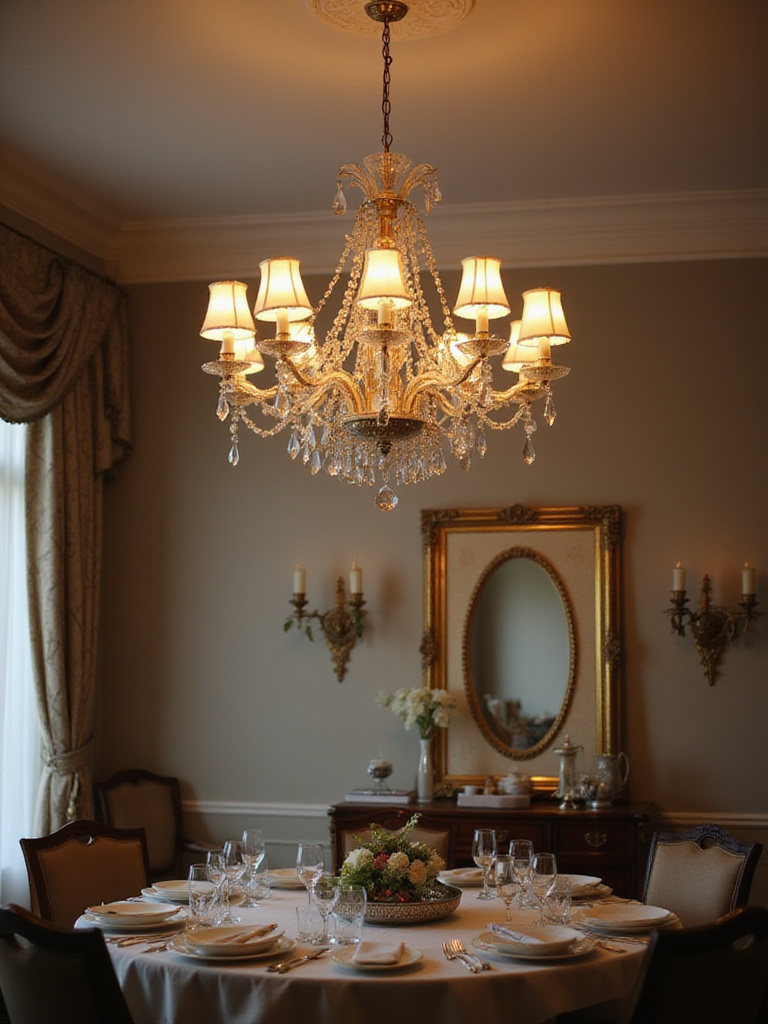
If the lights are flickering, the first thing to do is turn off the power and gently tighten every single bulb. A loose bulb is the number one culprit. If that doesn’t work, and you have LEDs on a dimmer, the issue might be an incompatible dimmer switch. If the entire fixture won’t turn on, check the circuit breaker before you do anything else. You’d be surprised how often that’s the fix.
- Flickering? Tighten the bulbs. Check dimmer compatibility.
- No Power? Check the bulbs, then the circuit breaker.
- Still Not Working? Now it’s time to call a pro.
Empowering yourself with these basic troubleshooting steps can save you time, money, and a lot of frustration.
22. Replace Your Bulbs All at Once
This might sound fussy, but trust me on this. When one bulb in your multi-light chandelier burns out, you should replace all of them at the same time.
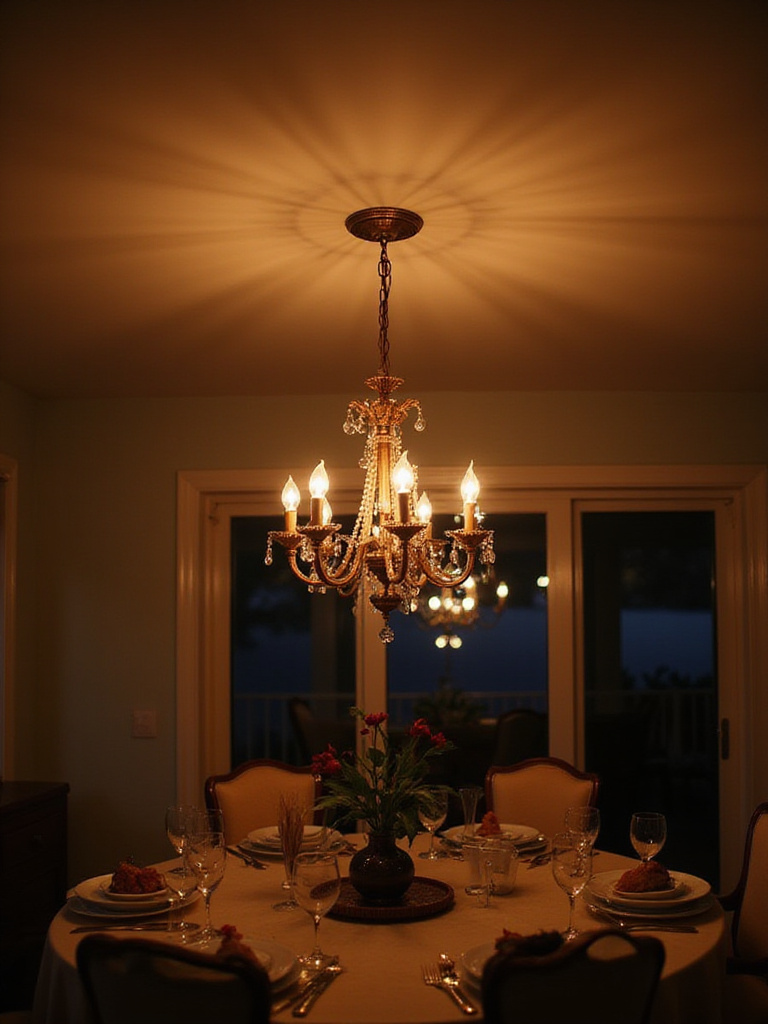
Here’s why: LED bulbs slowly dim over their long lifespan, and their color can shift slightly. If you only replace one, the new bulb will be noticeably brighter and possibly a slightly different color than the older ones. This creates a visually jarring, uneven look. For people with visual sensitivities, this inconsistency can be really distracting. By replacing them all at once, you maintain perfect consistency in brightness and color.
- The Strategy: Group-replace all bulbs at once.
- Pro Tip: When you buy bulbs for your new fixture, buy a full extra set right then. Store them in a labeled box so you’re ready to go in a few years and don’t have to hunt for a match.
It’s a simple habit that makes a big difference in the quality of your home’s light.
23. Find a Quality Chandelier That Fits Your Budget
A beautiful, well-made chandelier doesn’t have to cost a fortune. The key is to know what to look for. Focus on the quality of the materials and construction, not just the brand name. A fixture with solid construction, a durable finish, and UL-listed electrical components is a good investment, regardless of the price tag.
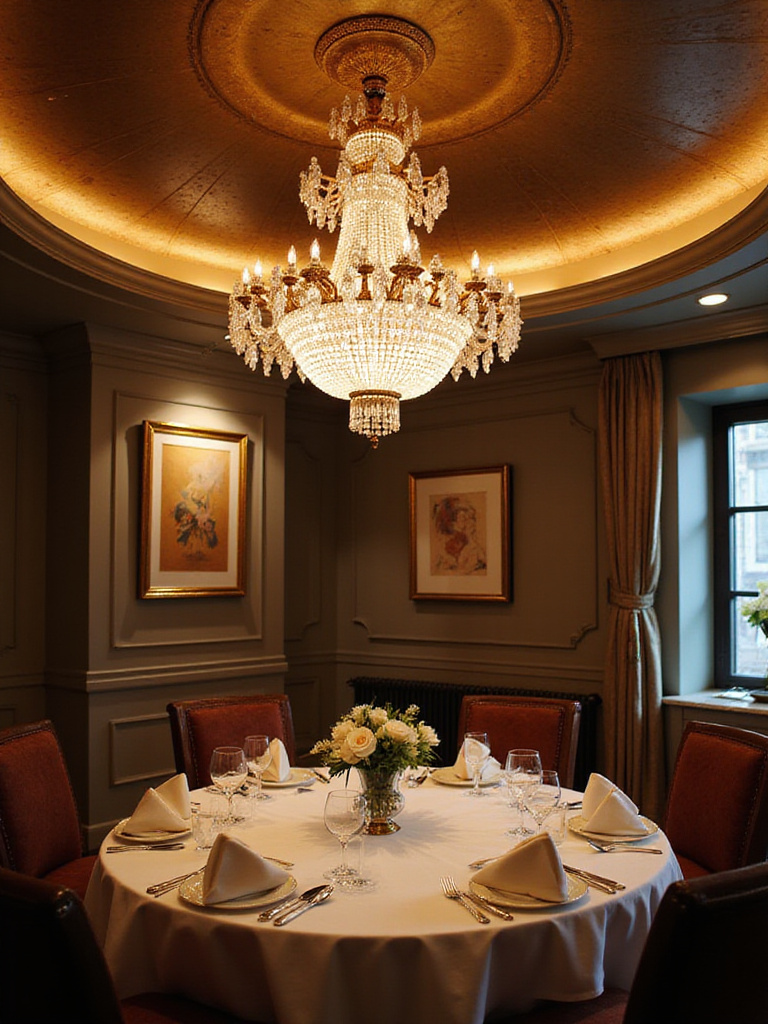
Shop around! Look at online retailers, lighting showrooms, and even home improvement stores. Pay attention to seasonal sales and look for floor model discounts. I’ve found some incredible gems for clients at consignment shops and architectural salvage yards.
- Look For: Solid materials, a good warranty, and reliable customer reviews.
- Shop Smart: Compare prices, look for sales, and don’t be afraid to consider secondhand or floor models.
A thoughtful purchase is about finding the best value, not just the lowest price. A quality fixture will bring your family joy for decades, making it a truly worthwhile investment in your home.
Conclusion
Choosing a chandelier is about so much more than light. It’s an act of placemaking. It’s a chance to create a space that encourages connection, honors your family’s needs, and adapts as you grow and change. When you consider how a fixture works for people of all ages and abilities, you’re not just engaging in accessible design—you’re simply practicing good design. You’re building a home that cares for its people. And that’s a beautiful thing.
